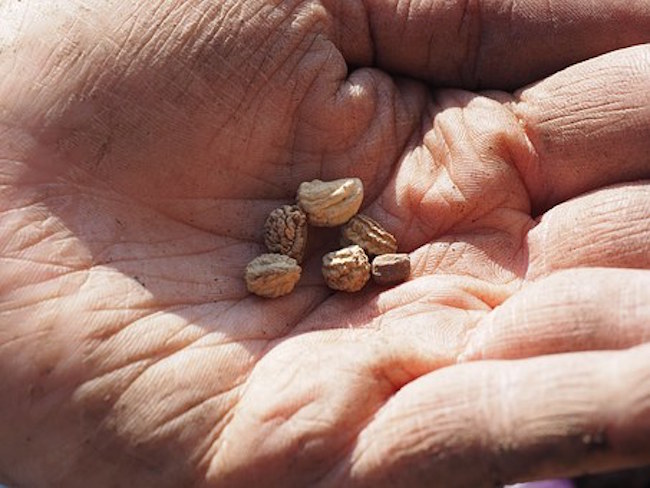Creating a More Self-Sufficient Garden for the Long-Term by Joanna Miller for The Organic Prepper
I love gardening. It’s fun, it’s rewarding, and it saves money. However, it’s only useful for prepping purposes in the long term if you focus primarily on a self-sufficient garden. If you rely on bags of fertilizer, soil, and seeds every year, grid interruptions and supply chain issues can put a stop to your fun hobby.
We saw the beginnings of this last year with seed shortages. In my area, seed supplies have been better than last year. But I am still always looking for ways to make my property more of a closed-loop. Between using perennial plants, seed saving, and on-site fertilizer production, I have made a lot of progress.
Perennials are long-term investments for a self-sufficient garden.
Rhubarb has been growing for about a month now. My first asparagus spears are just beginning to emerge. I planted one rhubarb crown and maybe seven asparagus crowns in 2014. You can’t harvest rhubarb the first year. And asparagus needs to wait for three years before harvesting. But if you have a place in which you plan to hunker down, they’re well worth it.
Since 2017, I have been getting several servings of asparagus a week for about two months a year. Other than the occasional weeding and watering, I’ve had no work or effort other than initially buying and planting the crowns.
This past winter, I dug up my rhubarb root and split it into pieces, hoping the “crown division” process was as easy as all the gardening books assured me. It was. My one original rhubarb plant has now turned into seven rhubarb plants. I won’t harvest any this year, but next year, I should be drowning in it, which is fine with my kids and me because we love rhubarb. And, like the asparagus, it has just become part of the landscape.
Are things like asparagus, rhubarb, mint, chives, and horseradish staples? Of course not. I have bags of dried beans, meat in the freezer and on the hoof, just like many of the people reading this site. But my garden plants can make the dried beans a lot more enjoyable. And they’ll come back every year whether I put a lot of work into them or not, which is certainly in line with the goal of a self-sufficient garden.
I planted chives last year, and the horseradish roots I put in over the winter have just started to come up. We’ll see how these do in the long run. Mint is everywhere. I planted it in 2015, and it would take over if I didn’t pull out big chunks every year.
Many of the things we enjoy eating every year are annuals
For annuals, you can save seed. Suzanne Ashworth’s book Seed to Seed is a great guide to get started saving seed. I regularly save tomato, pumpkin, and carrot seed. Seeds are not super expensive. I buy seeds every year because it’s fun to experiment and try new things. (The Organic Prepper recommends Seeds for Generations for your heirloom seeds – they are a small family business in Virginia). But saving some seeds can be a lifesaver. For example, a few years ago, some disease wiped out half my tomato plants.




